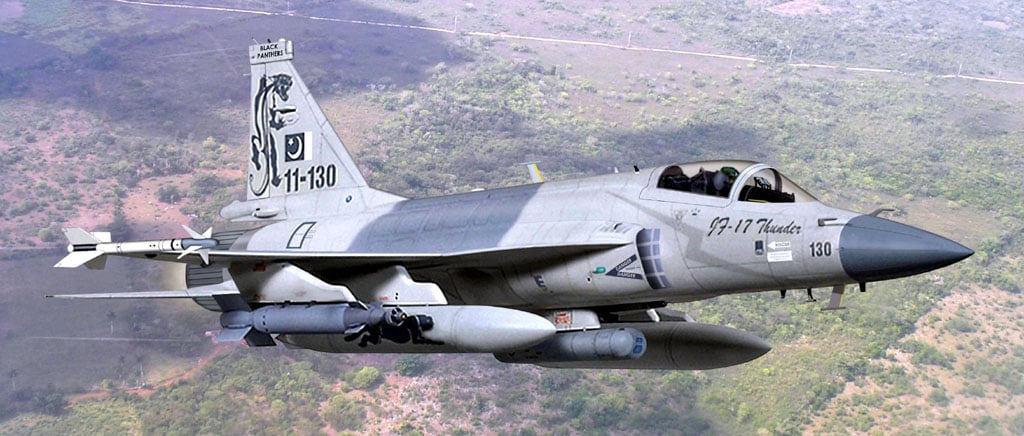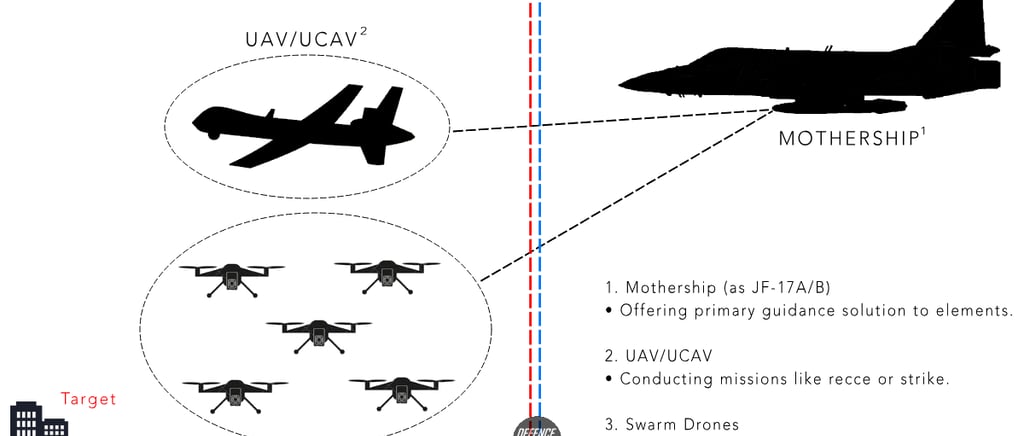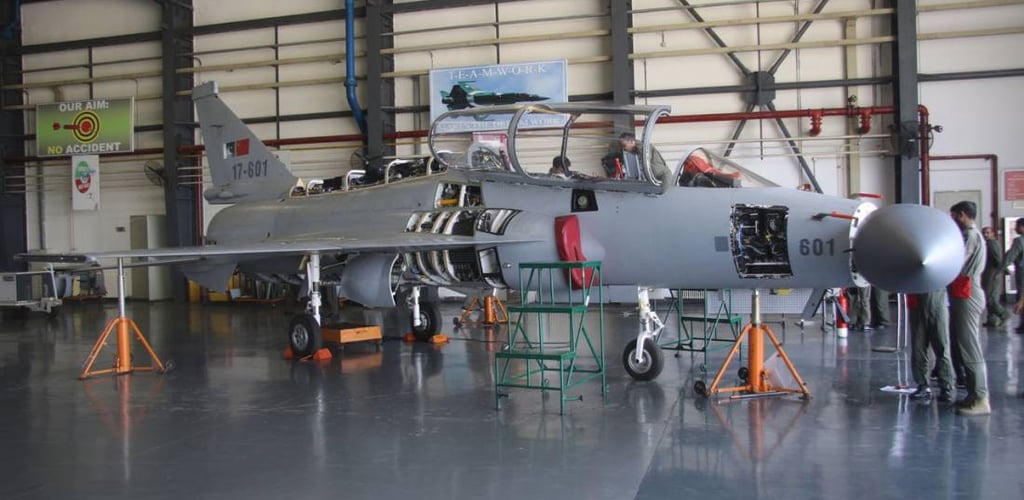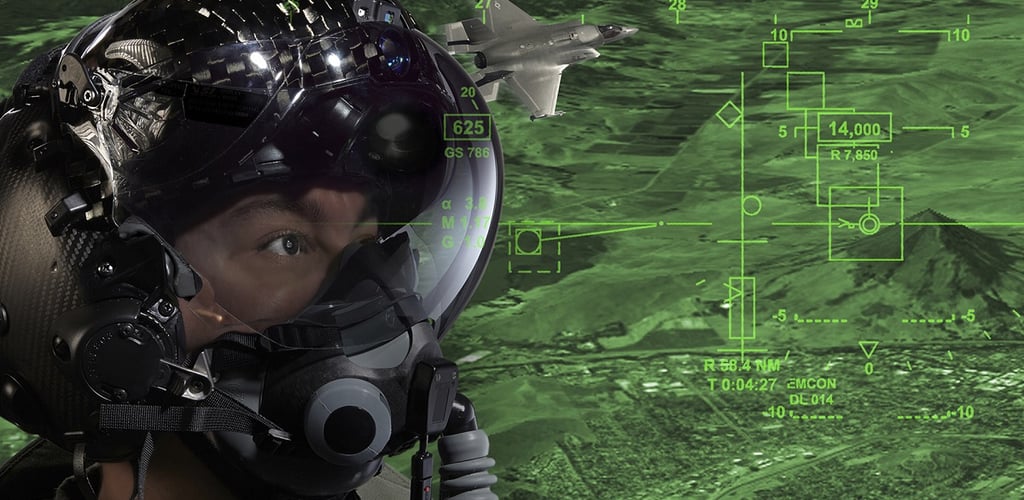The Future of JF-17: What Pakistan plans to field in its next generation of Thunder
BLOGS
Introduction
Overachiever or overhyped? These two terms are often used whenever two parties, with opposite views, enter into a discussion turned argument on the internet. A rundown of facts and then shift to a completely different topic is a common sighting in forums. However, details associated with the Sino-Pak fighter, JF-17 “Thunder”, are not hard to find with new details started coming out via multiple authentic sources, describing its characteristics and similar specifications related to performance and combat.


As there are already so many articles, posts, and projects released to promote the capabilities since the day the first batch of locally produced airframes rolled out from the PAC Kamra facility at PAF Base Minhas. However, we found some very interesting insights via the February 2022 issue of "Air Forces Monthly", a paid publication from Key. Aero, is a forum that receives regular contributions from aviation experts around the globe. The edition contains a JF-17 specific section named "Roar of The Thunder" written by a retired Squadron Leader who served in the Pakistan Air Force, Fahad Masood.
The article was divided into several parts, each dedicated to a specific chapter of the JF-17s journey, from past to coming future. We decided to present the highlights, listing down five major systems that are likely to be introduced in JF-17 “Thunder” future iterations, apparently, in Block IV or its successors which will continue the family of Sino-Pak flagship fighter.
1. Manned Unmanned- Teaming (MUM-T)
This concept similar to Loyal Wingmen is definitely one of the boldest claims made in the report. The MUM-T focuses on boosting JF-17 standoff offensive capability by adding the ability to act as a “mothership” guiding swarm of drones, deployed for missions ranging from reconnaissance to strike. Either the pilot or the occupant in the rear seat (in the case of the twin-seat [Bravo] variant) will be the one holding the control stick of the UAV/UCAV package in action. This feature will enable Pakistan Air Force to launch major strike missions in hostile territory without the risk of losing friendly human lives as the launch platform or the mothership, with crew on board, will remain in the secured airspace, far away from the envelope of enemy air defence systems, while the operational UAV/UCAVs, networked via datalink will do the job.


The author confirmed that Pakistan is already involved in a joint project with China and Turkey to implement the concept of MUM-T with fighter aircraft as a launch platform. This will also allow PAF to match up with India's Combat Air Teaming System (CATS) which is New Delhi's indigenous concept in the same role, but with HAL LCA Tejas as a launch platform. While CATS and its components are already been well known since its public unveiling in Aero India 2021, the background on Pakistan's MUM-T elements is classified as for now but believed to be in the early stage of development.
2. Radar Absorbent Material (RAM)
The Block 1 and Block 2 airframes of JF-17 were full aluminum surfaces while Block 3 introduced the usage of composite materials on a limited proportion of fuselage and wings, making the jet lighter and eventually enhancing the carriage capacity. The next plan is to employ RAM coating that will significantly reduce the Radar Cross Section (RCS) of the aircraft. This will be a necessary step to bolster the survivability of the aircraft in contest airspace, especially against air defense systems as it denies early detection and maintains the element of surprise


However, usage of the RAM layer is also now common practice for modern fourth-generation fighter aircraft or their upgraded variants. Examples include F-16V Block 70, Rafale, Eurofighter Typhoon, etc., However, the surfaces covered and thickness of the layer is still not close to the work done on dedicated fifth-generation stealth fighters like F-22 and F-35. But overall, even with partial, RCS can be reduced, especially in the frontal aspect.
3. AI integrated VR helmet
A new concept of Helmet Mounted Display (HMD) is briefly discussed but satisfactory to give an idea about its expected nature and capabilities. The system, also dubbed as a “wearable cockpit”, will offer the working environment to the pilot in Virtual Reality (VR) and also utilize commands simply by eye movements. The data detection and action will be processed via integrated Artificial Intelligence (AI) that can be tweaked as well as per the operator’s preference as well.


Interesting enough, the concept appears to resemble what we have in America’s Lockheed Martin F-35 “Lightning II” fifth-generation fighter, which incorporates a heavyweight Gen III HMD, designed by Rockwell Collins and Elbit Systems of America via their joint venture of Rockwell Collins ESA Vision Systems LLC (RCEVS). The system incorporates noise-canceling headphones, night vision, a forehead-mounted computer, and even a projector to display necessary footage in front of the pilot’s eyes.
Overall, all these new systems are no less than the “gamechanger” capabilities planned for a fighter that is officially classified in the light category. However, one must admit that the JF-17 has evolved into one of the best platforms in its class due to a new feature-set introduced with successive blocks, the latest being Bock III that packs within itself KLJ-7A AESA radar, new avionics set, enhanced payload, and most importantly, medium to long-range engagement capability with PL-15E active radar homing missile, as well as close-range combat lethality with the integration of a Helmet Mounted Sight system, that when cued with PL-10E Imaging InfraRed (IIR) homing missile, can fire High Off Bore Sight (HOBS) shots with +/- 90 degrees radius turning ability.
While all these systems determine JF-17’s ability to counter modern era threats, the future is also assured with this article by a PAF veteran. However, while there are enough talks on thunder, there is still quite an uncertainty on Program Azm, the program that involved the development of a fifth-generation stealth fighter. It is, however, can be assumed all these technologies will most likely be integrated into the dedicated stealth fighter of Pakistan where JF-17 may serve as a testbed that will ensure mutual growth of both systems.
Accept, Adapt and Improvise
In the conclusion of the article, one thing must be focused on, in the context of JF-17 and the Pakistan Air Force. Islamabad accepts the fact that it is not possible to spend on defence as much as India, which is much bigger, both geographically and economically. The manpower of the Indian military, along with the number of weapons it possesses may not be matched by its western counterpart. However, the fact is that the Pakistan military managed to bypass the issue by adopting low-cost but qualitative enhancement of its force. JF-17 is a low-cost system but with every capability that a modern force seeks in a modern era combat system, that includes BVR/Standoff combat ability with air-to-air missiles, precision-guided missiles as well as an anti-ship missile. All these features when coupled with the factor of large-scale production success of the fighter make it a remarkable achievement of Pakistan’s air power.
However, it is true that India with the latest developments in the same domain manages to hold the edge that may not be challenged by even the latest JF-17 or even recently procured J-10C fighters from China that even being claimed as a rival, still lacks the potential to match the Dassault Rafale and its feature-set that unique in nature. But it Is about time as a lot of developments are announced, but yet to be practically employed that leaves us no other option than to wait, for a similar unveiling of specs like we discussed today.
